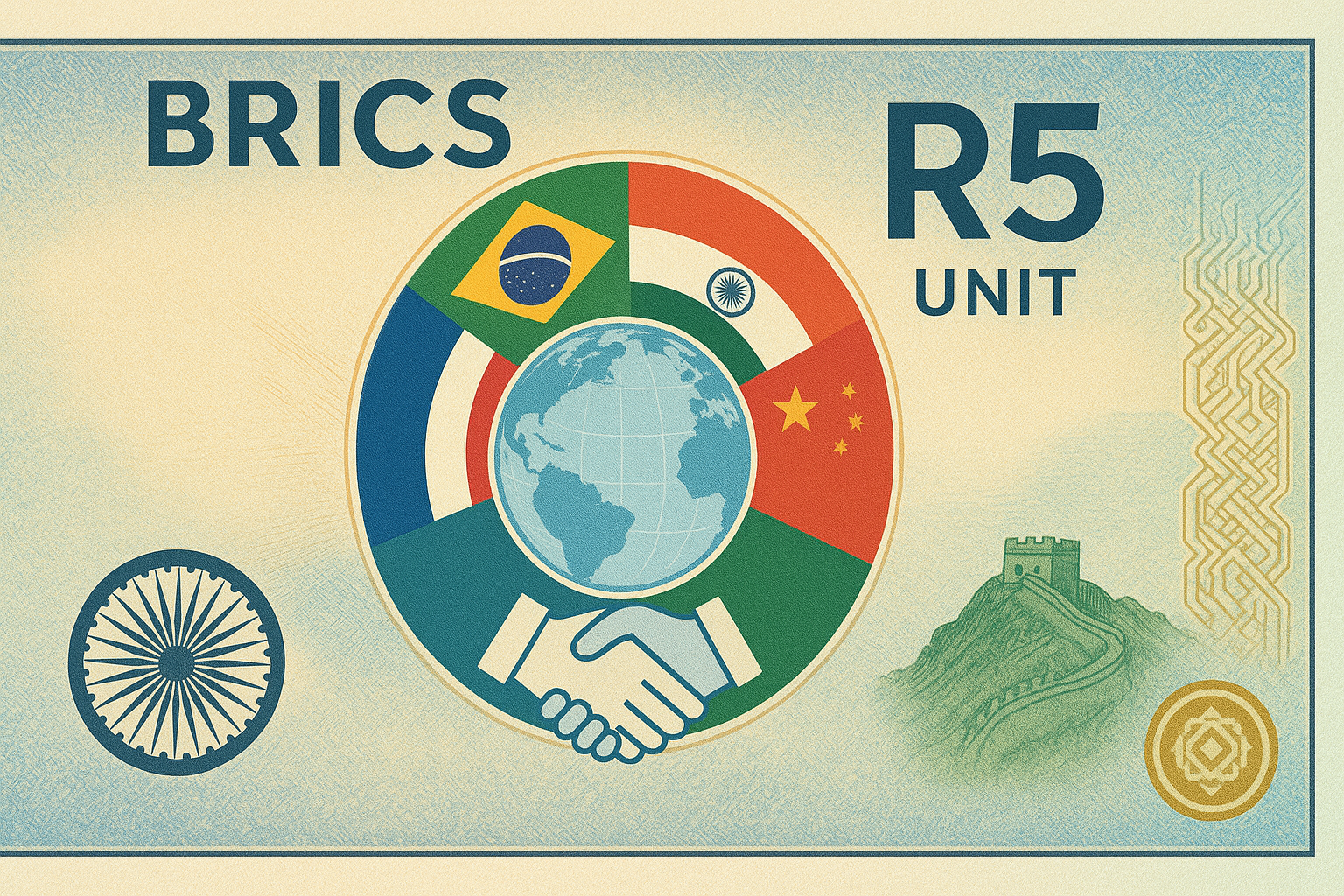Introduction
The BRICS bloc — comprising Brazil, Russia, India, China, and South Africa — has long been seen as a counterweight to traditional Western-led financial systems. Over the past decade, discussions have intensified around the possibility of a shared BRICS currency. The primary goal is to reduce dependence on the US dollar in international trade and finance, which could fundamentally shift global economic dynamics.
While the concept of a common currency is appealing to many economists and policymakers, its implementation is highly complex due to differences in economic size, monetary policies, and geopolitical priorities among member nations. As of late 2025, no official BRICS currency has been launched. Instead, the bloc is experimenting with local currency usage and innovative digital payment platforms, laying the groundwork for a more integrated financial system. Symbolic banknotes and conceptual designs have occasionally been shared in summits, but these remain prototypes for illustration purposes rather than legal tender.
Where the BRICS Currency Initiative Stands
R5 Approach: Leveraging Existing Currencies
Currently, the BRICS countries are promoting trade settlements using their existing national currencies, often referred to collectively as the R5 initiative. This includes the Brazilian Real, Russian Ruble, Indian Rupee, Chinese Renminbi, and South African Rand. This approach avoids the immediate complications of creating a new currency while allowing member states to de-dollarize trade transactions. By encouraging direct local-currency settlements, BRICS aims to streamline cross-border trade and reduce reliance on intermediary currencies.
Digital Payments: Building BRICS Pay
Beyond local currencies, the bloc is actively developing a blockchain-based payment infrastructure known as BRICS Pay. This platform aims to link central-bank digital currencies (CBDCs) and national financial systems, enabling faster, cheaper, and more secure transactions across member countries. By utilizing blockchain technology, BRICS can potentially reduce the cost of cross-border trade, minimize currency conversion risks, and improve transparency.
Symbolic Notes: Conceptual Prototypes
Occasionally, prototypes of BRICS notes appear at summits or in media coverage. These notes are purely symbolic, featuring the flags of all BRICS nations, globes, handshakes, and unity motifs. They serve as visual representations of cooperation rather than actual legal tender, emphasizing the bloc’s long-term vision for financial integration.
Potential Benefits for India
Even without a fully unified currency, India can reap several advantages from BRICS financial initiatives:
1. Reduced Currency Risk
Currently, many of India’s exports and imports are denominated in US dollars, exposing the economy to exchange rate volatility. By settling trade in local BRICS currencies, India can minimize exposure to fluctuations in the dollar, thereby saving costs and reducing financial uncertainty for exporters and importers alike.
2. Faster and Cheaper Trade
Direct rupee-based settlements could significantly improve trade efficiency, particularly for SMEs engaged with BRICS countries. Eliminating multiple currency conversions reduces transaction costs and expedites payment cycles, facilitating smoother cross-border commerce.
3. Strengthened Geopolitical Influence
India’s participation in shaping BRICS payment frameworks enhances its strategic and economic influence. By being a key player in developing digital platforms like BRICS Pay, India can promote multipolar financial norms while safeguarding its monetary sovereignty.
4. Encouraging Rupee Internationalization
The gradual adoption of the Indian Rupee for international trade could help raise its global profile, increasing acceptance in international markets. India’s cautious approach ensures that the rupee strengthens without compromising control over domestic monetary policy.
Concept Design: A Prototype BRICS Note
While no official BRICS banknote exists, designers and think-tanks have envisioned a “BRICS Unit”. Key features of such a prototype could include:
Front Side
-
A central globe or handshake motif symbolizing cooperation.
-
Flags of all founding BRICS members arranged in a circular band.
-
Denomination labeled as “R5” or “Unit” at the top right.
Reverse Side
-
Names and flags of additional BRICS+ members arranged in a ring.
-
Corner landmarks representing each nation, such as the Ashoka Chakra for India, the Great Wall for China, and Christ the Redeemer for Brazil.
-
A gold or digital-network emblem hinting at partial backing by a basket of currencies or blockchain system.
Color Palette: Blues, greens, reds, and golds inspired by member flags to highlight diversity and unity.
These design proposals are intended to symbolize collaboration and global multipolarity rather than serve as functioning currency.
Key Takeaways
-
No official BRICS currency exists yet, but the bloc is advancing in digital payments and local-currency trade.
-
India can benefit from reduced currency risk, faster trade settlements, and increased geopolitical influence.
-
Symbolic notes, while visually appealing, are primarily demonstrative and not legal tender.
-
India’s cautious approach ensures that it protects monetary sovereignty while positioning itself strategically in a multipolar financial world.
